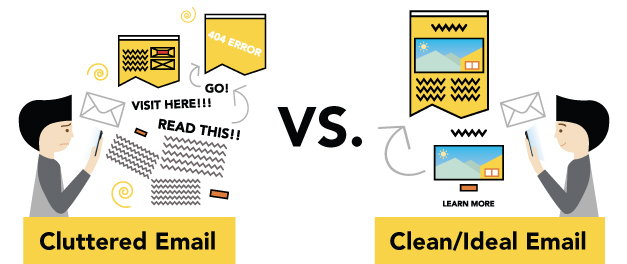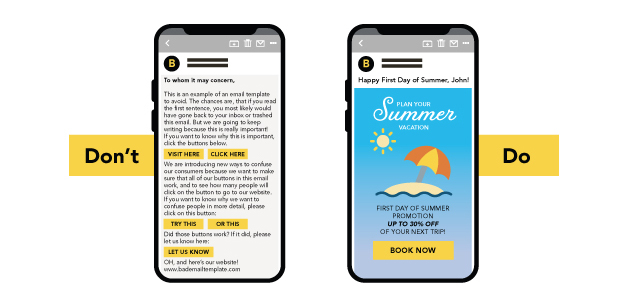Email Marketing 101
Take a look through your email inbox. Whether it’s a personal account or a business account, chances are there are several marketing emails listed. Reading all of those messages is another question.
If you’re not reading all of your emails, the recipients of your company’s campaign probably aren’t either. So what should you be doing to get your audience to engage with your emails? We have four essential tips for creating content your readers will look for in their inbox.
Ring in success with mobile
According to Google research, roughly 70% of people read emails on their mobile device first. While that percentage varies a bit by age group, knowing that your audience consumes most of their information through mobile—and designing your content to meet those preferences—will only help your open rates.
Screen size is obviously smaller, so keep a visual focus with your email. Graphics and imagery, combined with a simplified color scheme, will draw readers’ attention and get them to understand your point much faster.
In the same vein, make sure the text doesn’t require too much scrolling. If your email has strong imagery, there’s no need to have an article’s worth of text. A brief message with no more than two swipes of the screen is more than enough.
This optimized content won’t even matter if your audience has to grab and pinch the email in order to read it. The most important thing to do for audiences that read email on mobile is to make sure the email is readable on all devices! Apple or Android, Gmail or Outlook, your message should display easily on all devices, no matter the app.

Dial the right frequency
Given the surplus of content available and ever-shorter attention spans, frequency is vital to engagement. Your industry might dictate scheduling, but we recommend either weekly or biweekly emails to keep your business top of mind. Maintain a steady schedule, but not so regular your audience skips over the notifications. Messaging too frequently takes away from the relevancy of your content.
To whom it may concern
Essentially, your message should sound as if it came from an actual human and not a robot. A “Dear sir or madam” won’t cut it—but neither will simply inserting a first name. The best content caters to the individual as much as possible. You wouldn’t send a message about the latest dental techniques to a group of orthopedic surgeons, would you? It’s best to segment your audience to ensure they get the message aligned with their needs. Your audience is more likely to interact with messages they feel were created just for them and not for the masses.
Just as the messaging should be focused, so too should the call to action. Readers should have a clear understanding of what you want them to do, whether it’s clicking a link, downloading a resource, or responding. Including too many in-text links and call to action (CTA) buttons disturbs the flow and complicates where and when you want audiences to act—especially if the link takes them to a new page. Stick to one CTA if you can so readers don’t have to flit between an internet browser and their email.

Get animated
While you should concentrate on limited CTAs, that doesn’t mean you should hold back on making the email interactive.
Not that an interactive email has to be complicated either: sliding banner images, video links, quiz links, or animation all take your message to the next level. For example, we design an email newsletter campaign for one of our clients with a headline and an animated image related to that headline. This gives the recipient pause before moving on to their next message, increasing the chance of the message getting read all the way through. If a simple banner animation creates this opportunity, why skip it?

Send us a message
Even with the surplus of digital messaging going around, email remains an effective marketing tool in 2019. By keeping your messages mobile friendly, relevant, and interactive, you increase the chances of them getting read and of the audience engaging with your business. It’s time to embrace the power of short, relevant emails with simple imagery.
These are just a few of the ways you can boost your email marketing campaign. You may find that other techniques work better for your business. Let us know in the comments which strategies work for you—or send us an email at letstalk@streetlevelstudio.com. What did we miss? We want to know!